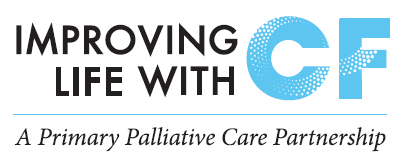Patient and Family Caregiver Educational Handouts
Even as scientific advancements are leading to new CF therapies, many aspects of well-being for people with CF and their families require attention. You can now access a new series of educational handouts created especially for people living with CF and their loved ones through Improving Life with CF: A Primary Palliative Care Partnership.
These handouts address symptoms commonly experienced by those with CF, such as pain, changing energy levels, poor appetite, stress, and breathing problems like cough and shortness of breath. Each handout provides information on the common causes of specific symptoms, how to communicate with healthcare providers, techniques for self-management and medical management, and patient and family resources. Other handouts provide education on general topics, such as discussing health care choices with your CF care team.














